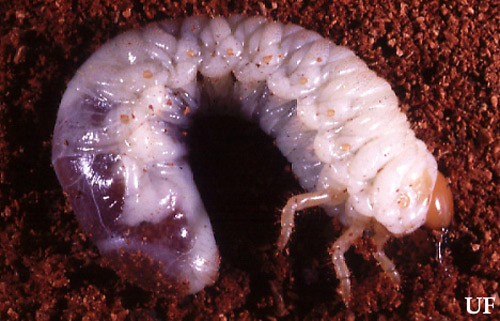
by Beth Bolles | Mar 2, 2016
A common question about insects when cold temperatures arrive is whether or not the cold will kill many pests. Although temperatures will occasionally drop below freezing in north Florida, it is normally not cold enough to significantly impact insect populations for the upcoming year.

Typical white grub of the genus Phyllophaga. Photograph by John L. Capinera, UF
Even when we do receive a significant amount of cold weather, insects have many methods to survive weather changes. Some insects survive by moving to micro-habitats that are more resistant to temperature fluctuations. Beetle larvae may move deep in the soil or into logs and trees for protection. The grubs can continue feeding on decomposing material throughout winter months. Beneficial insects such as dragonflies and damselflies stay protected in their nymph forms in the mud of ponds and lakes.
One of the most famous insect survival strategies is migration. We are all familiar with the late summer and fall flights of the monarch butterfly to warmer regions of Mexico and southern California. Those butterflies and moths that do not migrate have their own survival techniques. They will overwinter in protective pupal cases to emerge as adults in the spring. Moth cocoons are spun of silk and may be composed of multiple layers, making them a good protection for the transforming insect.
Insects are adapted for survival and can live through far colder winters than we experience. Even though our cold weather will not drastically change insect populations, periods of cold will at least slow down their activity enough for us to enjoy a break from many pest worries.
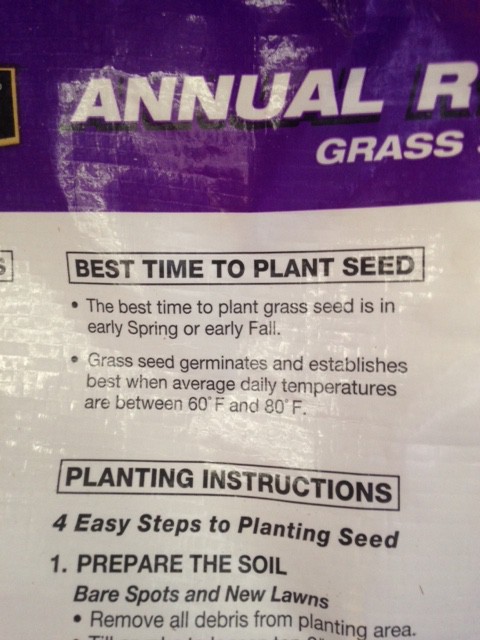
by Julie McConnell | Mar 2, 2016
Those familiar with the Florida-Friendly Landscaping™ Principles know that the number one rule is Right Plant, Right Place. But proper timing is important and should not be discounted! Experienced gardeners recognize that certain flowering and annual vegetable plants have distinctive seasons, but may not realize that turfgrass is seasonal, too.
Warm season and cool season turfgrasses fall into the classes of either annuals and perennials. In North Florida, the most commonly grown turfgrasses are warm season perennials such as Zoysiagrass, Bermudagrass, Centipedegrass, and St. Augustinegrass. These grasses thrive in warm weather and, although they may slow down or even turn brown in the winter, are still very much alive and resume growth readily in the spring. Because they are warm weather lovers, plan to seed one of these species when soil temperatures are warm enough for successful seed germination and when young new grass has enough time to become established without danger of frost damage.
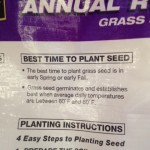
Annual ryegrass label says to plant early spring – but that is too late in North Florida. Photo: Julie McConnell, UF/IFAS
On the flip side there are cool season grasses such as fescue, ryegrass, and bluegrass. These grasses prefer cool weather and do poorly and may go dormant or die when subjected to hot weather. These grasses may be perennials in other areas of the country, but should be treated as cool season annuals if grown in Florida. Cool season grasses may be used as a groundcover in bare spots or to overseed warm season grass from fall through early spring.
When purchasing turfgrass seed, be sure to check with your local extension office to verify that the timing is right for that particular grass. Seed products sold locally may have recommendations that are more relevant to northern climates and performance will differ.
For more information about seeding lawns please read Establishing Your Florida Lawn
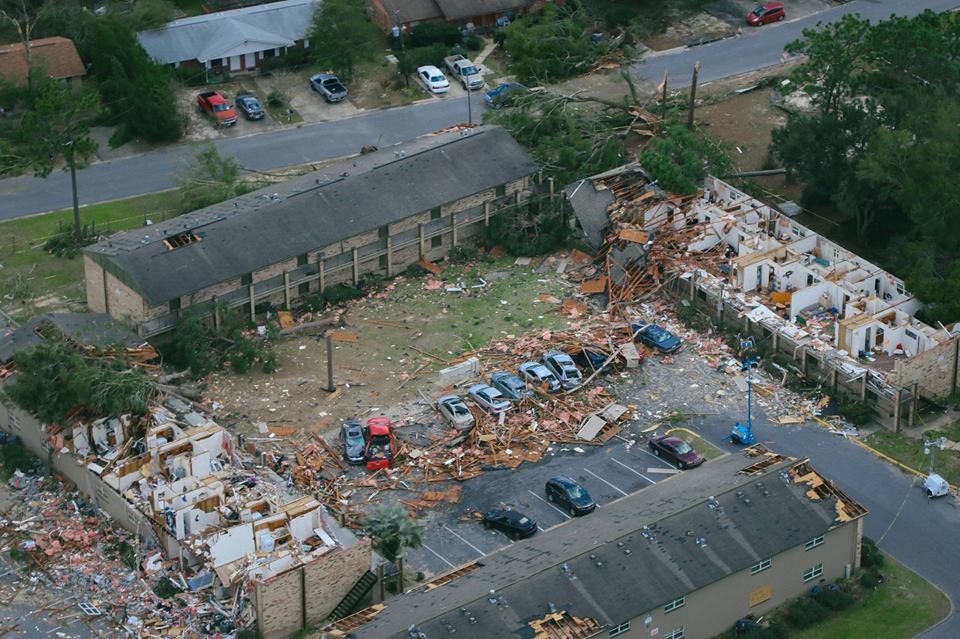
by Carrie Stevenson | Mar 2, 2016
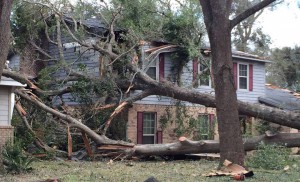
Even large, healthy oaks may fall during a tornado. Photo credit: northescambia.com
When we think of bad weather in Florida, hurricanes are typically the first thing that comes to mind. In reality, Florida is 4th in the nation in tornado frequency—and when adjusted for frequency per square mile, we are actually number 1. Residents of Escambia County are believers now, as the community reels from enduring two tornadoes in the span of a week. Both rated as EF3 storms, the winds in the twisters (136-165 mph) were nearly equivalent to a Category 4 or 5 hurricane. The western Panhandle and much of south Alabama were under tornado watches as the most recent band of thunderstorms moved through.
Based on a thorough study of surviving trees after hurricanes in Florida, there are several species of trees best suited to windstorms. For north Florida, some of the top species are: Florida scrub hickory, several native holly species, Southern magnolia, sand live oak, myrtle oak, and bald and pond cypress. Data from the full study and an in-depth overview is available from the University of Florida. To prepare for a heavy thunderstorm or a milder hurricane, it is wise to replace or plant trees with the most wind-resistant species. Because of the damage from falling trees in storms, many homeowners are nervous about planting trees. However, there are so many benefits to healthy trees in a landscape that they vastly outweigh the small risk of them falling.
Keep in mind that tornadoes are the most violent natural disasters and may cause complete devastation of homes, neighborhoods, and forests in a matter of seconds. After the Escambia County tornadoes, we witnessed large uprooted trees, downed power lines, flipped vehicles and blown-off roofs. Several homes and apartments were completely flattened or blown off their foundations. Luckily, the odds are in one’s favor of not getting hit directly by a tornado—because there’s often little anyone can do for a landscape in that situation. It’s best to hunker down in a windowless inner room or hallway, which saved the lives of hundreds during the last round of bad weather.
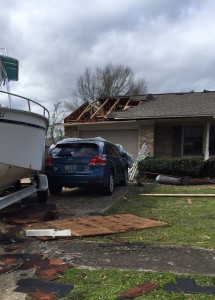
Wind entering the garage of this house may have caused the roof blowout above it. Photo credit: Carrie Stevenson
However, there’s good news that work that can be done to help protect a home during storms. Hardening homes through “windstorm mitigation” techniques can prevent updraft from strong winds. A house is only as strong as its weakest area, and those are typically the connections between the walls, roof, and foundation. A wind-rated garage door and/or brace are crucial, as strong winds can enter a garage and blow out the roof above it.
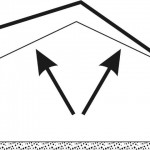
When strong winds enter a home, their force moving out can cause an updraft and lift off the roof. Graphic courtesy UF IFAS.
In Escambia and Santa Rosa County, the local nonprofit “Rebuild Northwest Florida” operates a cost-sharing program to help residents harden homes. After the tornado in Century (near the Alabama border in north Escambia County), engineers from Rebuild examined a home that suffered a direct hit from a tornado. The home had been retrofit with crucial wind mitigation techniques and sustained no structural damage. Buildings, sheds, and homes all around it were destroyed. Examples of several wind mitigation techniques, including storm shutters, wind-rated windows, garage door braces and a tornado shelter are available for public viewing at the Escambia County Extension office in our windstorm mitigation building.
As the spring storm season heats up and rolls into hurricane season, keep in mind these suggestions for both the landscape and home. As always, contact your local Extension office if you have any questions.







